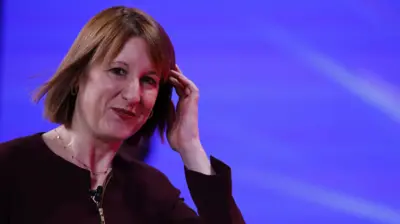We've updated our Privacy and Cookies Policy
We've made some important changes to our Privacy and Cookies Policy and we want you to know what this means for you and your data.
Quantum key distribution with single photons
- Author, Jason Palmer
- Role, Science and technology reporter, В鶹№ЩНшКЧТіИлїЪ News
German researchers have improved a method to make secure codes called quantum key distribution (QKD) by using the smallest possible packets of light.
The approach's security exploits the fact that quantum systems, once observed, are irrevocably changed.
Previous work using light beams of many photons has suffered reduced security, as some light could be intercepted.
The work solves this issue by using electricity to generate single photons.
That brings closer the prospect of global-scale, functionally uncrackable code distribution.
QKD is not a means of creating codes, or ciphers, but rather a way to share them securely.
With the decoding instructions safe from eavesdroppers, an encoded message - containing far more information than the key itself - can then be shared publicly through simpler means.
A great deal of work has gone into QKD in recent years, and a number of companies even offer off-the-shelf systems that promise quantum security - providing you can install a fibre-optic link between the sender and receiver.
It has even spawned at the Norwegian University of Science and Technology, dedicated to finding ways to beat such systems.
In 2007, the Swiss government even secured its election results with QKD technology.
But to exploit the fullest security allowed by the peculiar rules of quantum mechanics, each "bit" of information in the key should be encoded onto exactly one photon, sent through air or down a fibre.
Yet it is surprisingly difficult to reliably produce exactly one photon. Many systems that squeeze out tiny amounts of light do so sometimes with one photon, and other times with two or more.
Most often, researchers have used laser sources, filtering down their trillions of output photons in a bid to allow just one to pass.
Each extra photon represents a security risk, as it can be intercepted en route and the receiver would never know.
The solution, according to Sven Hoefling of the University of Wuerzburg, Germany, and colleagues is to use what are called quantum dots to create single photons.
Quantum dots are tiny structures made of semiconductors whose size determines, again through rules set by quantum mechanics, exactly what colour and amount of light they produce - and how often they produce it.
This combination of assured single-photon emission at high rates driven by power no different from a battery, Dr Hoefling said, brings QKD much closer to commercial application.
"What we have now is a major step in combining these different advances in a real experiment - it combines all those key ingredients in this initial test," he told В鶹№ЩНшКЧТіИлїЪ News.
"Quantum dots come in semiconductors, and of course semiconductors are at the heart of all the technology we use. You can really benefit from that, because you don't need to make a whole new chain of technology. That's why quantum dots are very promising."
The team showed that they could generate streams of single photons at rates as high as 95,000 bits per second, passing them through air across a laboratory bench. The team has gone on to pull off the same trick across 500m from one roof to another.
The team is now working on "quantum repeaters" that, like repeaters in optic-fibre networks, vastly increase the distance over which signals can be faithfully sent.
"We're already going beyond this with longer distances using the same sources and approach," Dr Hoefling said.
"So far we have been talking about metres, but for really long distance communication - which everyone would want - one would need to cover or bridge continents."
Top Stories
More to explore
Most read
Content is not available








